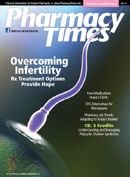Publication
Article
Pharmacy Times
Medication Safety: Cases of Name Confusion
Author(s):
Pharmacists can take precautions to avoid medication errors caused by mixing up drugs with similar-sounding names.
Pharmacists can take precautions to avoid medication errors caused by mixing up drugs with similar-sounding names.
VESICARE—VESANOID MIX-UP
A prescriber’s office sent an electronic prescription to the patient’s pharmacy; the prescriber intended to prescribe Vesicare (solifenacin succinate) for overactive bladder but inadvertently selected Vesanoid (tretinoin), which is used to induce remission of acute promyelocytic leukemia. The pharmacy technician entered the prescription for generic tretinoin; however, the pharmacy was unable to dispense the medication, because the patient’s pharmacy benefit manager required a prior authorization. The technician faxed a request, and the prescriber’s office replied back that Vesicare was intended. Both of these products are available in 10-mg solid oral dosage forms, increasing the risk of confusion.
WHICH "R" DRUG IS IT?
The caregiver for a new patient, who was changing pharmacies, requested the pharmacist obtain copies of prescriptions from another local pharmacy. The pharmacist called the other pharmacy and received the verbal prescription transfers. One of the prescriptions received by the pharmacist was for the anti-Parkinson’s drug ropinirole (Requip) 2 mg. At dispensing, while counseling the patient and the caregiver, it was discovered that the prescription was incorrect. The prescription was reverified with the other pharmacy to be the antipsychotic drug risperidone (Risperdal) 2 mg.
The change in medication was made before they were dispensed to the patient. “Risperidone” and “ropinirole” can sound alike when spoken; both start with “r” and have the same number of syllables. They are also available in the same dosage strengths (0.25, 0.5, 1, 2, 3, and 4 mg). Because of the similarities, including the same general length of the names (10-11 letters), the pharmacist who reported the event believes there is also a potential for confusion when the names are handwritten. We applaud this pharmacy and the caregiver for engaging in patient counseling and education, which, if not performed in this case, may have led to patient harm.
BENAZEPRIL CONFUSED WITH BENADRYL
A pharmacist reported a mix-up between benazepril (Lotensin) and Benadryl (diphenhydramine). A patient faxed a request to the pharmacy to ask for her “benazapryl.” The pharmacist who received the fax interpreted it as Benadryl and placed a bottle of diphenhydramine in the bag for pick-up. Around this same time, the pharmacy went through a change in wholesaler, and many manufacturers of generic products were changed.
A few days later, a coworker of the patient picked up the medication (along with several others). The technician at the point of sale told the coworker that many of the manufacturers had changed recently and that some of the pills may look different. The patient received the diphenhydramine, filled her medication box with the capsules, and took diphenhydramine daily for 3 weeks before noticing she was unusually tired. When she brought the bottle back to the pharmacy, the error was recognized.
RISK-REDUCTION STRATEGIES
Investigate strategies (eg, tall man letters) to differentiate these products on computer screens. To reduce the risk of drug name confusion when accepting new phone prescriptions or transfers of prescriptions, require staff to write down the prescription and then perform a read back (and spell back for drugs that are known to cause confusion) of the medication name, strength, dose, and frequency of administration for verification.
Prescribers should provide or pharmacists should obtain the purpose of the medication to ensure that the medication matches the patient’s condition. Most reported look- and sound-alike name pairs have different indications, which can help the pharmacist differentiate the products. Assigning time to provide counseling to patients and/or caregivers, especially for new prescriptions and those transferred from other pharmacies, is a good strategy that can help to prevent medication errors from going home with the patient.
Dr. Gaunt is a medication safety analyst and the editor of ISMP Medication Safety Alert! Community/ Ambulatory Care Edition.
Subscribe to Newsletter
Pharmacy Times and the Institute for Safe Medication Practices (ISMP) would like to make community pharmacy practitioners aware of a publication that is available. The ISMP Medication Safety Alert! Community/ Ambulatory Care Edition is a monthly compilation of medication-related incidents, error-prevention recommendations, news, and editorial content designed to inform and alert community pharmacy practitioners to potentially hazardous situations that may affect patient safety. Individual subscription prices are $52 per year for 12 monthly issues. Discounts are available for organizations with multiple pharmacy sites. This newsletter is delivered electronically. For more information, send an e'mail message to [email protected], or contact ISMP at 215-947-7797.







